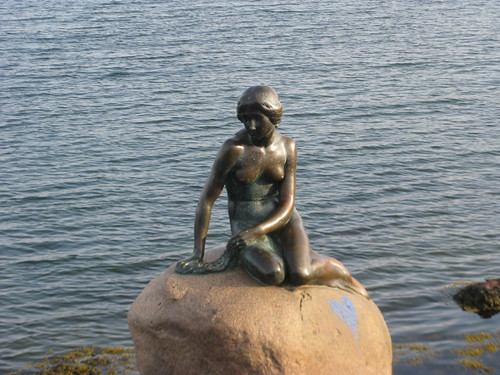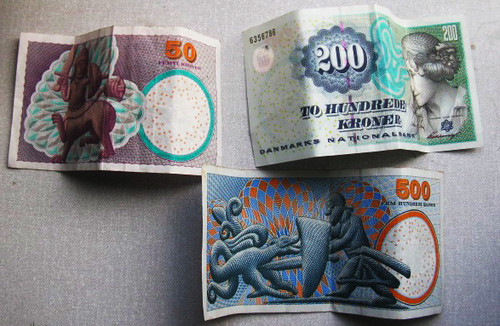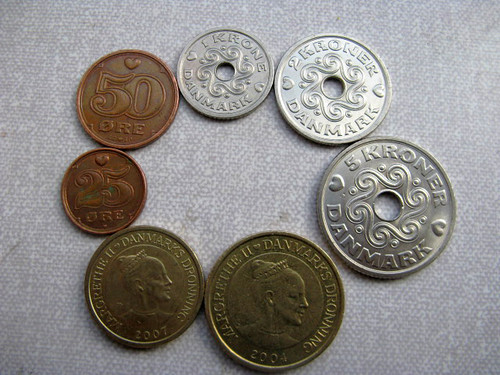You are browing the archive for the ‘Observations’ category...
Jun
21
I’ve been taking the module 1 Danish language class for English speakers all semester. The course is not affiliated with RSLIS. I was able to take module 1 for free since the municipality pays for non-EU citizens to study the local language. On Tuesday I took the test and surprisingly I passed! The requirements were very low, however. The test consisted of 2 parts. Part 1 involves either giving a summary (in Danish) of one of 3 second-grade level Danish books OR describing yourself (in Danish). You would draw from a hat which one you’d do, so you had to prepare for all 4 possibilities.
The second part involved asking and answering questions (in Danish) about a photograph we brought in. Altogether the test was very informal and was supposed to last less than 10 minutes. I was nervous all the same, lol. Since I was in Turkey on the official test date, I arranged to be tested as soon as I came back, this past Tuesday. It was just me and the instructor. I ended up having to talk about one of the 3 books, and then of course my photo.
The instructor (whose name is Jacob) said that I had given one of the best presentations of that particular book he’d ever heard. That was surprising, because I was definitely not the best student in the class. He also said my command of the grammar was very good, but that I shouldn’t be nervous when speaking Danish. And of course my pronunciation and accent were terrible, but they don’t expect module 1 students to be able to pronounce words properly. All they care about is whether you can express yourself in simple, continuous Danish.
So Jacob said he’d mail my module 1 certificate to the States. I will continue with Module 2 when I return to Denmark in the future (I’m hoping to).
I can say that reading those second-grade level books has dramatically increased my vocabulary and understanding of the language. I can recognize infinitives, plurals, adjectives, conjunctions, 3 basic tenses and definite articles. When I see something written in Danish I can figure it out, the simpler the better, with the help of my English-Danish dictionary. But I cannot carry on a conversation in Danish. It’s still very hard to understand spoken Danish. I can pick up words and phrases but native speakers talk so quickly and slur their words together, it’s very difficult to follow. Whenever I try to order food in Danish, the cashiers immediately switch to English because they can tell I’m not a native speaker. Or, if they don’t switch to English, they ask me questions in Danish which I can’t understand, meaning we have to switch to English anyway.
While I’m at home in the States I will definitely continue to study Danish and increase my vocabulary. I’m serious about learning the language, but it will take lots of time and patience. I may even start a blog about it to stay motivated, we’ll see! I’m tired of English, really. I need a new language to express myself in. :-)
Apr
29
During the Easter Holidays, many Københavners were pretty much gone…gone on vacation, or gone home to visit their families. So the city was pretty much a ghost town on April 9th, 10th, 11th, 12th and 13th. By the way, Easter is called Påske. When I ventured out of my room on Thursday the 9th, I wasn’t expecting nearly all of the stores and libraries to be closed and for the streets to be practically empty. There was, however, an abundance of tourists. Camera-happy, map-wielding tourists. Guess they decided to take their Easter holiday in Copenhagen. Well, I had a camera. I blended right in with them! :-)
The weather was lovely all Easter weekend, so I spent a LOT of time outdoors, on foot, exploring Copenhagen. I also took advantage of my transportation pass and rode the 250S, 5A and 1A busses to the end of their lines. :-) As a result, I finally have a better idea of how the boroughs of this city connect. For example, by riding the 5A, I finally know that Nørreport Station is just around the corner from Rådhusplasden. I now know how to walk from Christianshavn Metro Station to Strøget. I figured out how to walk to the Little Mermaid. Little things like that! I’ve been here since August and I’m only now figuring it out. And by no means have I discovered ALL of the gems Copenhagen has to offer.
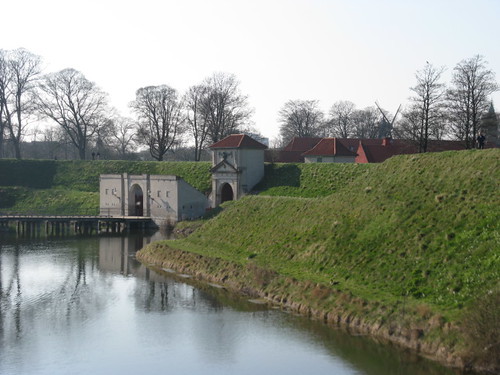
One of my favorite discoveries during the Easter break was Kastellet (the citadel), this really awesome park not far from Østerport Station. It’s actually a fortification, according to Wikipedia, overseen by Danish Kings Christian IV and Frederick III in the 1600s. This citadel formed part of Copenhagen’s defense against England in the 1807 Battle of Copenhagen. Refer to Wikipedia for more details. ;-) Walking around the entire pentagon-shaped area is a nice thing to do on a sunny afternoon, because the views are gorgeous. It’s also a nice place to take a jog.
Another place I visited during my Easter walks around Copenhagen was Langelinie (litterally “long line”), a ship port near the water. If you like boats, this is the place to go. There was also a discount clothing market and quite a few food stands. It’s a bit touristy but I had fun. Langelinie park is not too far from the ship yard and it is there that you can find den lille Havfrue (the Little Mermaid).
Finally, I walked down Islands Brygge, a waterfront street with lots of little bars and cafes. One end of Islands Brygge (the one closer to the island of Amager) looks a bit deserted, run down and rough, with graffiti on the buildings, junk lying about and huge piles of sand everywhere. The opposite end (closer to the city center) is nice, with good-looking apartments and a cute little dock. Back in March, my classmates held a bowling night at a bowling center in Islands Brygge and it was grand. I hadn’t been bowling (in the physical world) since high school gym class. :-)
A random woman offered to take a picture of me at Langelinie. She thought I was a tourist because as I left she said, “enjoy your holiday in Copenhagen!”

“Rougher” side of Islands Brygge
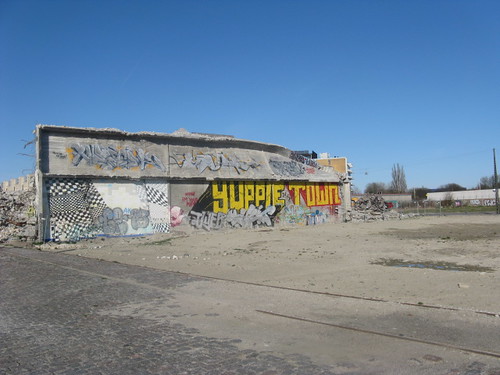
“Nicer” side of Islands Brygge
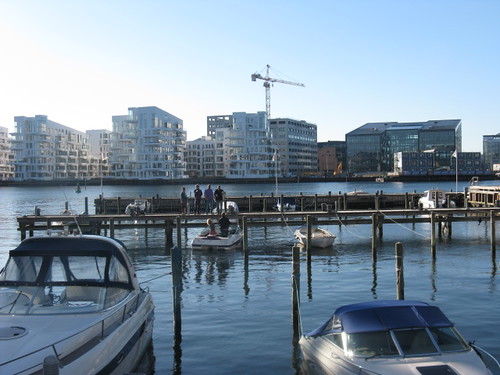
Double-decker busses used on the 250S route…I caught a ride in one and ended up at the bus yard in Islands Brygge at the end of its route

More photos: Kastellet, Langelinie, Islands Brygge
Mar
10
Denmark’s currency is the Danish Crown, called Danske krone in Danish (abbreviated DKK). At the time of this writing, 1 USD is just under 6 DKK (~5.98). Last fall, 1 USD was about 5 DKK. So to get an approximate value of how much an item costs in USD, you’d divide the amount in kroner by 5. So 100 DKK is about $20 (actually it’s less than that since the exchange rate is about 5.98-ish, but I’d rather overestimate the value by a few dollars than underestimate it).
The plural form of “krone” is “kroner.” Krone is the Danish word for crown. When I first arrived last fall I kept saying “kroners” to make it plural but that’s a redundancy because “kroner” is already plural. Saying “kroners” is like saying “dollarses.”
Well, there are quite a few coins. Sometimes I still struggle to remember which is which. To alleviate that problem, I am going to sort all of my coins out and place them in separate bags according to value. I will then clearly label each bag (e.g. 5 DKK). The Danish coins are (clockwise, starting from the smallest silver coin at the top in the picture at left): 1-krone, a 2-kroner, 5-kroner, 20-kroner and 10-kroner. The 1, 2 and 5 kroner coins come with nifty little holes in the middle. I assume it’s so you can string them together and wear them as a necklace so you’ll always have change with you?
There are also 25- and 50 øre coins. 100 øre = 1 krone. So 50 øre is half a krone and 25 øre is a quarter-krone. But the 25 øre coins went out of commission in October 2008 and are no longer in use.
The Danish paper money is also quite interesting and colorful to boot. You can get a 50 kroner bill, 100, 200, 500 and 1000. According to Wikipedia they are going to redesign the bills between 2009 and 2012, with Danish bridges as the theme.
Note: The paper money pictured at the top is actually part of my rent money. I snapped a photo of it just before I took it down to the post office to pay my rent for the month. ;-)
